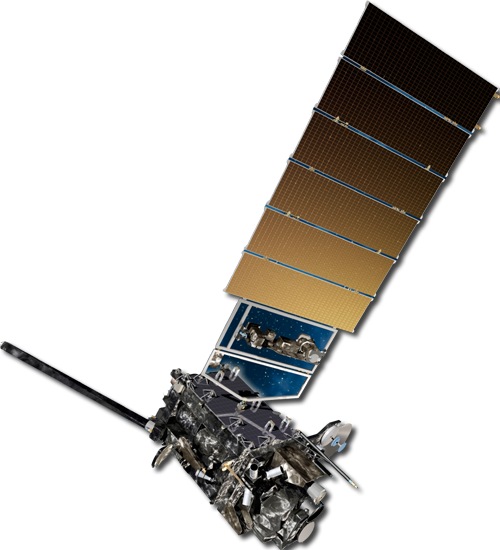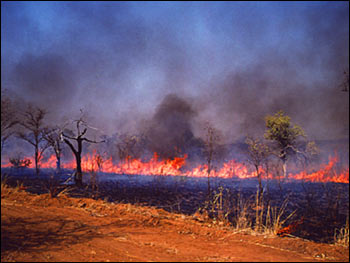Monitoring the Global Environment

Biomass Burning and Global Climate Change
The bulk of the carbon dioxide added to the atmosphere each year comes from fossil
fuels (coal, oil and gas) used in industrialized nations. However, NASA scientists
estimate that the burning of tropical forests contributes about 30 percent of the total
amount of carbon dioxide released into the atmosphere on an annual basis. Increasing
levels of carbon dioxide is a primary cause of the greenhouse effect and global climate
change.
Scientists have determined that the global average surface temperature increased 0.6
degrees Celsius over the last century. This small increase in temperature could be
a serious threat to our planet. Many people are concerned that humans have been artificially
raising the Earth's temperature by increasing the concentration of greenhouse gases
in the atmosphere. Not only do our factories, power plants, and cars emit tons of carbon
dioxide each year, we produce millions of pounds of methane by allowing our trash to
decompose in uncovered landfills and by breeding large herds of cattle. Additionally,
our agricultural practice of using nitrogen-based fertilizers releases excess amounts
of nitrogen oxide into the atmosphere. Cumulatively, these greenhouse gases are contributing
to steadily rising global temperatures and climate change.

On a global level, fires play an important role in climate change since they emit
both greenhouse gases and smoke particles (aerosols) into the atmosphere. Remote sensing
offers the most cost effective means for long-term monitoring of fires and associated
aerosols.
When scientists integrate data from GOES with instruments flown on Polar Operational
Environmental Satellites (POES), the result is a high quality system to detect, monitor,
and display the locations of fires and significant smoke plumes detected by meteorological
satellites.
| 6/ 15 |





